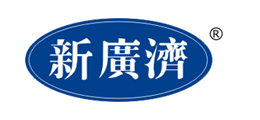The Latest Variable Speed Products of Lifting Equipment
Release Time : 2019-03-12 View Count : 324 次Rotor Speed Regulation Controller of XGJ-ZZTS Series Lifting Motor
XGJ-ZZTS series motor speed regulator is developed and manufactured to meet the increasing requirements of high speed regulation in domestic hoisting industry and the high price of variable frequency speed regulation. It has the following advantages:
1. Superior performance: Speed regulation ratio more than 100. It has super low-speed performance and absolutely synchronized speed.
2. Energy saving and consumption reduction: save a lot of resistors and contactors, save energy.
3. Simple wiring: main circuit: 12-line control circuit: 6-line
4. Easy debugging: As long as the connection is correct, it can work normally without debugging.
5. Easy to operate: fast to think, slow to slow, as easy as volume control, as handy.
XGJ-ZZTS series motor speed control controller has the following performance characteristics compared with frequency conversion speed control:
1. It can speed the motor below 10 r/min, and work for a long time at heavy load and low speed, so the motor will not burn.
2. In the case of medium and heavy load, the motor stator can make the goods rise, fall and stop without applying reverse voltage.
3. For some heavy objects to stay in the air for a period of time, when moving in the air, there will be no instantaneous power failure and no need for mechanical or electromagnetic braking.
4. Without additional regenerative braking, the motor can be directly adjusted to zero speed. This is equivalent to a transformer working. Cargo can be parked in the air without braking. Because the stator voltage remains unchanged and the power consumption is less than rated power, there is no harm of burning the motor, let alone the phenomenon of slippage.
5. Parallel speed regulation, can achieve two or more motor rotors parallel speed regulation, absolute synchronization.
6. It can brake smoothly with minimal brake wear, reduce vibration of girder and steel structure, prolong the service life of crane, and fundamentally improve the internal quality of crane.
Principle Introduction:
The speed controller is connected with series resistance and bidirectional thyristor in the rotor circuit of AC winding rotor motor. The rotor current can be controlled by changing the conduction angle of thyristor, and the speed can be achieved by adjusting the current. Speed feedback is used to realize closed-loop control, and rotor frequency feedback is used for sampling, which is converted to control voltage by F/V.
By artificially controlling the quick turn-on and turn-off of thyristor, the motor can run in a certain speed region, the speed fluctuation of the mechanism is very small, and the human eye can not feel the change of speed. The speed characteristics are shown in the following figure:
The parameters of XGJ-ZZTS crane motor rotor speed controller are as follows:
Applicable motor
Lifting motor
Motor power
Below 630 KW
Standard rotor voltage
Below 1000V
Rotor Current
Below 2500 A
Control power supply
AC380V + 10% 50HZ
Three-phase power supply
AC380V + 10% 50HZ
Steady Speed Accuracy
<2%
Speed range
1 gear 0-70% 2 gear full speed
Rotor Parallel Speed Regulation
Synchronization error <0.1%
Motor starting speed
Less than 1 rpm/s
Minimum operating speed
0 to 1 rpm
Start frequency
More than 60 times per minute
Protection Level
IP30
Cooling mode
Natural cooling
Installation mode
Cabinet type
Installation conditions:
U governor must be installed vertically with firm sole and good ventilation.
U ambient temperature: - 25 +55.
Relative humidity of u: <95% (20 ~50 ~C)
U Installation site should be well ventilated.
U vibration is less than 0.5G.
If the altitude of U exceeds 2000 meters, the capacity should be reduced.
Connect the controller with the motor, resistor and linkage table according to wiring diagram before use. After checking, the power supply can be connected to the test run.
Operation instructions of linkage table
Sit in the middle of the left and right control box, adjust the seat height, front and back tilt.
The degree is in the right position, and the handle is in the middle position.
In the case of no power supply, the left and right handles should be operated separately, and the left and right directions should be flexible, reliable and accurate positioning.
Test run: turn on the power supply and light the indicator.
Firstly, no-load logic test is carried out. The handle is operated in ascending and descending direction. The main hook should work normally according to the operation instructions. If it is reversed, the three-phase power supply can be switched arbitrarily into one set.
If the load of the hook is light, it can be operated according to the normal operation method. Various operating speeds can be selected arbitrarily according to the working conditions.
Heavy load lifting: the right hand moves the handle 5 degrees backward, the brake is turned on, the motor stator is energized, the rotor current is 0, the eye hook and the cargo move slowly, the cargo begins to climb at the crawling speed near 10 degrees, with the movement of the handle, the thyristor conduction angle increases, the lifting speed accelerates, 50 degrees per hour is medium speed, pulling to the end of the full speed. When the cargo rises to the desired position, the handle moves forward until it reaches zero speed. Then the handle is reset to the middle, and the motor stator turns off the brake lock (also can be adjusted to zero-speed translation).
Heavy-duty drop: the main hook handle moves backward slowly (lifting direction), after 5 degrees, the brake is opened, the handle continues to move backward, and the speed is lowered: slightly forward, the speed of descent is accelerated, slightly backward, the speed of descent is slowed down, and the motor can be adjusted to zero speed. Keep in mind: the operation should be carried out slowly, and the operation range should not be too large! Repeated operation several times, can be handy, easy to control. Such operation, in fact, is in the reverse braking state, which must be made clear to the operator.
Vehicle speed regulation: the stator and rotor are connected in parallel, driving in the left direction. When the handle moves 5 degrees to the left, the vehicle does not move. When the handle moves 10 degrees, it starts to walk. At 50 degrees, it is at medium speed. At the end, the handle is at full speed. Drive in the right direction, the same as in the left direction.
Vehicle speed regulation: see









